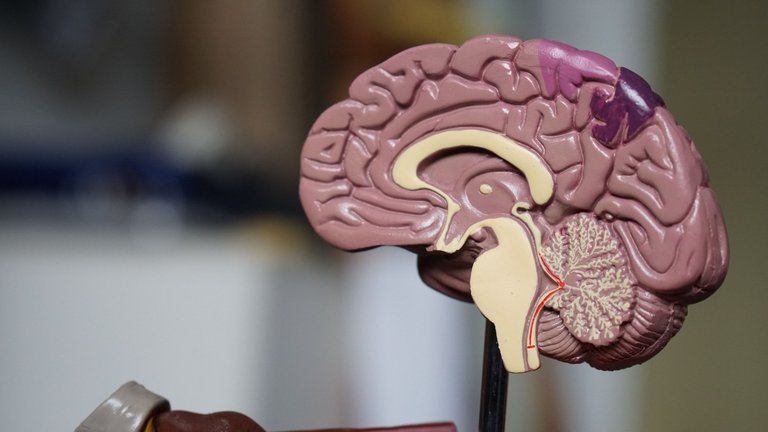Did you know that your brain parts work in a hierarchical order?
One experiment which was conducted years ago by Gallistel fascinated me so much in my college days. It drove me to want to know more about the human brain. Reason was, understanding how the brain functions could make you better predict human behavior. In this particular experiment we learned that the various structures in the brain tend to function hierarchically.

Meaning there are higher centers which command lower centers, which in turn command still even lower centers , and so on . It seemed that this hierarchical principle was the rule throughout the entire system.
To see how this hierarchical system operates, the behavior of cats whose brain has been cut (technically, transected) at various anatomical levels of the system was considered.
Now such transections sever the part of the nervous system below the cut from all control by the portion above. In other words, there is loss of communication between the separated parts of the nervous system.
The question was: What will the part below the cut do now that it is on its own?
At the beginning, there was a transection that left the animal with spinal cord, hindbrain and nothing else .
The result?
The hindbrain animal seemed to still have the ability to make the various limb and trunk movements that are required for standing, crouching, or walking. But it couldn't put them together. As a result , it is unable to stand or make walking movements unless supported by straps .
Without support, it would collapse, unable to come up with more than disorganized reflex twitches if stimulated . Reduced to a hindbrain , the animal has become a mere biological marionette without a puppet master. Simply put, the animal can move, but it cannot act.
However, when the transection is made just above the mid brain . Now the animal can stand without support , can walk , can shiver , chew , swallow , and hiss . We see here that the midbrain clearly performs some integrating function. It somehow pulls the individual muscle movements together to form coordinated acts .
But the thing is, these acts don't fit into any larger behavioral scheme . The acts of a normal cat must be organized into sequences that would serve a larger goal.
For example, A hungry cat will walk to search for prey, will stalk the prey if one is found , and will then pounce , kill , and eat it . But a midbrain cat can't put its acts together . If starved , it won't look for food ; if attacked , it won't flee . It acts , but it acts without point or purpose.
Fascinating right?
When the transection(cut) is now made at a still higher level, so that the animal is left with most of its limbic system, lacking only the cortex, its separate acts are now organized toward some specific purpose. It searches for food when hungry, it looks for a warmer place when cold, escapes when harmed and so on. In many ways it behaves much as a normal cat would behave.
However, there's a difference here: it doesn't perform well. If another cat attacks, it tries to strike back, but it's not very effective. Its hits are not accurate and can be easily dodged by the opponent. This means that limbic animal can coordinate its acts into a sequence that has a purpose, However, the sequence and the setting for its actions must be very straightforward. If it gets too complicated, the animal won't succeed. The limbic animal can do things, and its actions serve some purpose, but without a cortex, it's not very smart, or in short "stupid".
By conducting this fascinating experiment, you'd realize that the cortex is indeed the boss or CEO of the human body, as I mentioned in previous blogs. Without it, animals (including humans in the context of science) can still perform basic acts, but our ability to adapt and respond intelligently, swiftly, and effectively greatly diminishes.
Thanks for reading this blogisode, and I hope you found it as fascinating as I did when I learned about it. I'm still working on improving my writing skills, so pardon me if the style of writing wasn't interesting enough. I would be glad to hear your opinions on this topic or suggestions on how to enhance this blog. Have the best of the day, and I will see you in tomorrow's blogisode.

References and links:
https://www.researchgate.net/figure/Hierarchy-of-brain-function-The-human-brain-is-organized-from-the-most-simple-eg_fig1_232510107#:~:text=More%20simple%2C%20regulatory%20functions%20(e.g.,structures%20(see%20Loewy%20and%20Spyer%2C
https://www.hopkinsmedicine.org/health/conditions-and-diseases/anatomy-of-the-brain
https://royalsocietypublishing.org/doi/10.1098/rstb.2019.0319
https://my.clevelandclinic.org/health/body/22638-brain
https://my.clevelandclinic.org/health/articles/23073-cerebral-cortex
Congratulations @serenecounsel! You have completed the following achievement on the Hive blockchain And have been rewarded with New badge(s)
Your next target is to reach 1250 upvotes.
Your next target is to reach 100 upvotes.
You can view your badges on your board and compare yourself to others in the Ranking
If you no longer want to receive notifications, reply to this comment with the word
STOPTo support your work, I also upvoted your post!
Check out our last posts:
Thats nice to know. Thanks for the update
Wow, two badges in a row, that's awesome @serenecounsel! 🎉
So it seems some of us who can't adapt or respond intelligently tend to have an underdeveloped cortex! It also seems that the cortex is the latest addition which makes it at the top of the hierarchy :)
Very interesting, thanks for sharing!
You've got a solid point. Thanks so much for taking the time to read and even leave a comment. I appreciate it. I'm glad you enjoyed reading.
Thanks for your contribution to the STEMsocial community. Feel free to join us on discord to get to know the rest of us!
Please consider delegating to the @stemsocial account (85% of the curation rewards are returned).
Thanks for including @stemsocial as a beneficiary, which gives you stronger support.